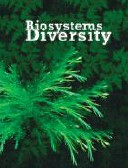Influence of cobalt chloride and ferric citrate on purple non-sulfur bacteria Rhodopseudomonas yavorovii
Influence of cobalt chloride and ferric citrate on purple non-sulfur bacteria Rhodopseudomonas yavorovii
Author(s): S. O. Hnatush, O. Maslovska, S. Y. Komplikevych, I. V. KovbasaSubject(s): Evaluation research, Environmental interactions
Published by: Дніпропетровський національний університет імені Олеся Гончара
Keywords: free radical damage; lipid peroxidation; heavy metals; oxidative modification of proteins; antioxidant defense system; cobalt ions; ferric ions;
Summary/Abstract: Heavy metals that enter the environment due to natural processes or industrial activities, when accumulated, have a negative impact on organisms, including microorganisms. Microorganisms have developed various adaptations to heavy metal compounds. The aim of our work was to investigate the influence of ferric citrate and cobalt (II) chloride on biomass accumulation, indicators of free radical damage and activity of enzymes of the antioxidant defense system of bacteria Rhodopseudomonas yavorovii IMV B-7620, that were isolated from the water of Yavorivske Lake (Ukraine, Lviv region), which was formed as a result of flooding of a sulfur quarry. We used cultural, photometric methods, and statistical processing of the results was performed using two-way ANOVA and factor analysis. It was found that ferric citrate at a concentration of 1–12 mM causes inhibition of the accumulation of biomass of bacteria Rh. yavorovii IMV B-7620 up to 44.7%, and cobalt (II) chloride at a concentration of 1–15 mM – up to 70.4%, compared with the control. The studied concentrations of ferric citrate and cobalt (II) chloride cause free radical damage to lipids and proteins of Rh. yavorovii IMV B-7620. As a result of two-way ANOVA we found that under the influence of ferric citrate statistically significant changes in biomass accumulation, lipid hydroperoxides and thiobarbiturate reactive species content, superoxide dismutase activity were predetermined by increasing the concentration of metal salts as well as increasing the duration of cultivation of bacteria, while the content of diene conjugates and catalase activity changed with increasing duration of cultivation. Under the influence of cobalt (II) chloride, statistically significant changes in all studied indicators were found both due to the increase in the concentration of metal salts and with increasing duration of bacterial cultivation. The studied parameters of Rh. yavorovii IMV B-7620 cells under the influence of ferric citrate and cobalt (II) chloride are combined into two factors, that explain 95.4% and 99.2% of the total data variance, respectively. Under the influence of ferric citrate, the first latent factor included diene conjugates, thiobarbiturate reactive species, carbonyl groups in proteins, which are closely linked by a direct bond and inversely related to the content of lipid hydroperoxides and catalase activity.
Journal: Biosystems Diversity
- Issue Year: 30/2022
- Issue No: 1
- Page Range: 38-45
- Page Count: 8
- Language: English

